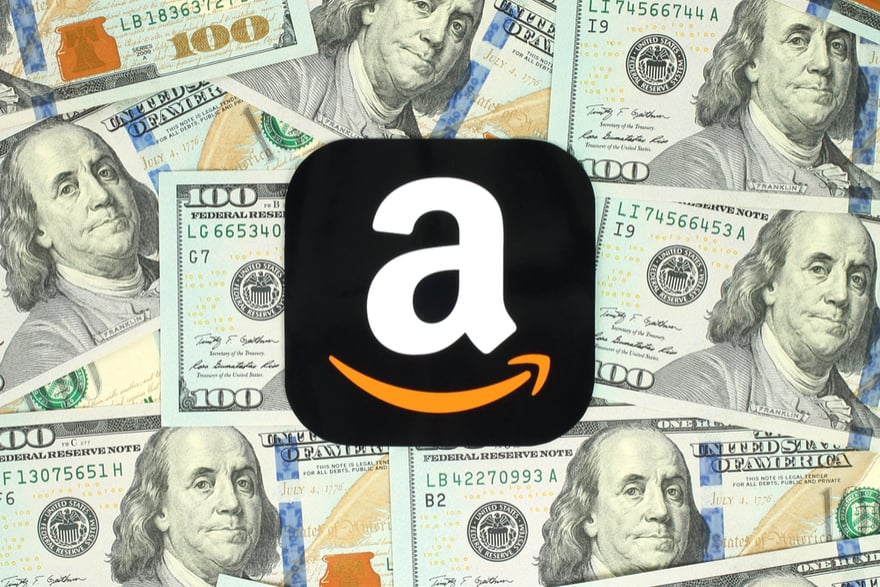Guest post by Rodney from EcommercePlatforms.io
Selling through Amazon is one of the many modern entrepreneurial experiences that can almost feel magical. Compare it to old-fashioned business methods and you can see how much easier it is to move into the exciting world of ecommerce. But you forget the fundamentals at your peril, and one of the key fundamentals for any business is cash flow.
Even if you sell exclusively through Amazon, you need to understand cash flow: the flow of money in and out of your business over a certain period of time, weighing outgoings (everything you spend on stock, marketing, fees, etc.) against income (sales). Allow me to explain why:
Amazon Payments Take Time to Go Through
If you’ve had some success selling through Amazon, then you’ll know how its payment system operates. It isn’t a case of making a sale and immediately receiving the money. Instead, the money gets queued up and paid out anything from a week to a month afterwards. This isn’t so bad when you’re a hobbyist seller, but when it’s your main business, that causes issues — issues that can lead to sellers using other sales channels as well.
As noted, cash flow is about the balance of what you’re spending versus what you’re earning and having positive cash flow — bringing in more than you’re losing — gives you some degree of security. When the return on your spend doesn’t arrive until weeks afterwards (you might buy some new items, wait a few weeks to make some sales, then wait a few more to get paid), that can easily leave you with negative cash flow. There are two reasons why you should fear this:
Running Out of Inventory Looks Really Bad
When you go into a brick-and-mortar store and find that an item isn’t in stock, it seems understandable. You accept that one store can’t have an unlimited selection of items, no matter how efficiently it’s organized, and it doesn’t damage your perception of the seller.
But things are different online. After all, you don’t need a stored item to be in a specific location — you just need it to exist, and be ready for sale. And because most products can in principle be sourced fairly easily (many even through dropshipping services), it’s tough to accept a common product being unavailable for delivery.
As an Amazon seller, you need to be aware of how bad it can look to suffer stock issues, particularly given the exceptional convenience of the wider Amazon platform — but if you don’t keep control of your cash flow, you can be left without the capital to spend on stock replenishment, waiting for money from sales to come in.
Changing Trends Require Quick Adaptation
Here’s the other reason why negative stock flow is threatening: it prevents you from adapting to changing demand. Ecommerce through a large marketplace is often about rapidly taking advantage of new fads: to use a recent example, the merchants who bulk-purchased fidget spinners when they first became popular must have made a lot of money.
And without positive cash flow, you can’t invest in new product types. You can only wait for your existing stock to deliver enough return, by which point the moment (brief as it can be) may have passed. It might seem relatively unimportant, but repeatedly missing opportunities to make some easy money can be extremely damaging in the long term.
It’s also important to your brand image that you keep your inventory refreshed. Paying close attention to what your customers say (through a platform like FeedbackExpress, of course) isn’t only vital for showing your quality: it’s also necessary for charting changes in their preferences and interests. If your most loyal customers expect you to start selling a new product, but your inventory never changes, it will damage their perception of you and lead them to look elsewhere.
It Isn’t Particularly Hard to Track
Lastly, Amazon sellers need to understand cash flow because it will allow them to track it. Tracking cash flow isn’t actually that complicated these days.
Amazon accounting tools such as Quickbooks and Wave (since it’s free, give Wave the edge over Quickbooks) allow you to easily record your financial details and calculate where you stand.
What you should end up doing is saving up enough money to account for the lag between making a sale and receiving the payment. It’s a good idea regardless since you never know when your market might collapse, but if you set aside perhaps a month of regular income to use as a buffer, you should be able to avoid the damaging effects of negative cash flow.
As noted, cash flow is a massive metric for every type of business, and Amazon sellers — despite having many advantages over conventional sellers — are no different.
Pay close attention to the money you have in reserve, and be careful. Getting into negative cash flow can cause you serious problems.



